1257 Results
This study used nudges—such as signage/posters, stickers, and feedback—to improve decision-making about struck-by prevention practices across the construction workforce.

This Data Bulletin examines occupational, environmental, chemical, ergonomic, and
physical exposures that construction workers face, including exposure scores by industry,
common chemical substances, and blood lead levels.
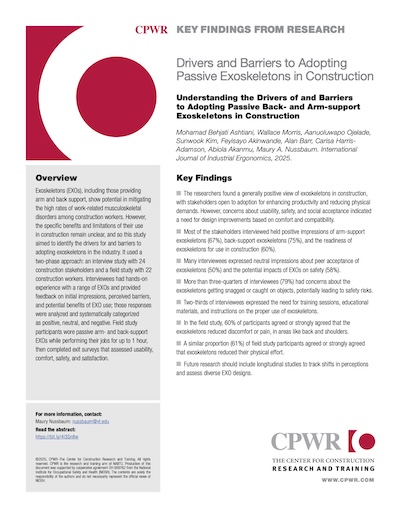
Exoskeletons may be able to mitigate the high rates of work-related musculoskeletal disorders among construction workers. Because exoskeletons’ benefits and limitations are unclear, this study examined drivers for and barriers to adoption...
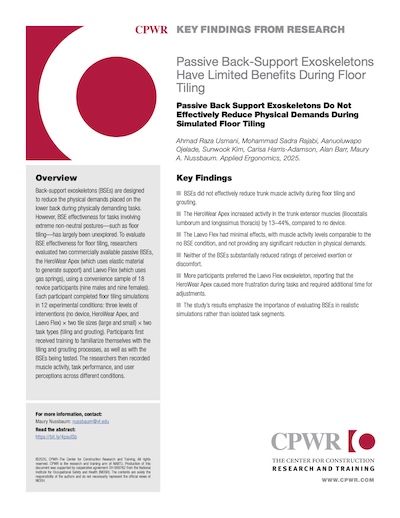
Researchers evaluated the effectiveness of two commercially available back-support exoskeletons (BSE) using a sample of 18 novice participants. The BSEs did not effectively reduce trunk muscle activity during floor tiling and grouting.

This study compared the health outcomes of 22,747 construction workers in the BTMed program, who had faced hazards such as asbestos, radiation and silica, to outcomes for 2,218 non-construction workers in areas like security and science.

This study focused on determining if restrictive spirometry pattern (RSP), or low total lung volume, is associated with work in construction trades and if there is any association between RSP and increased mortality.
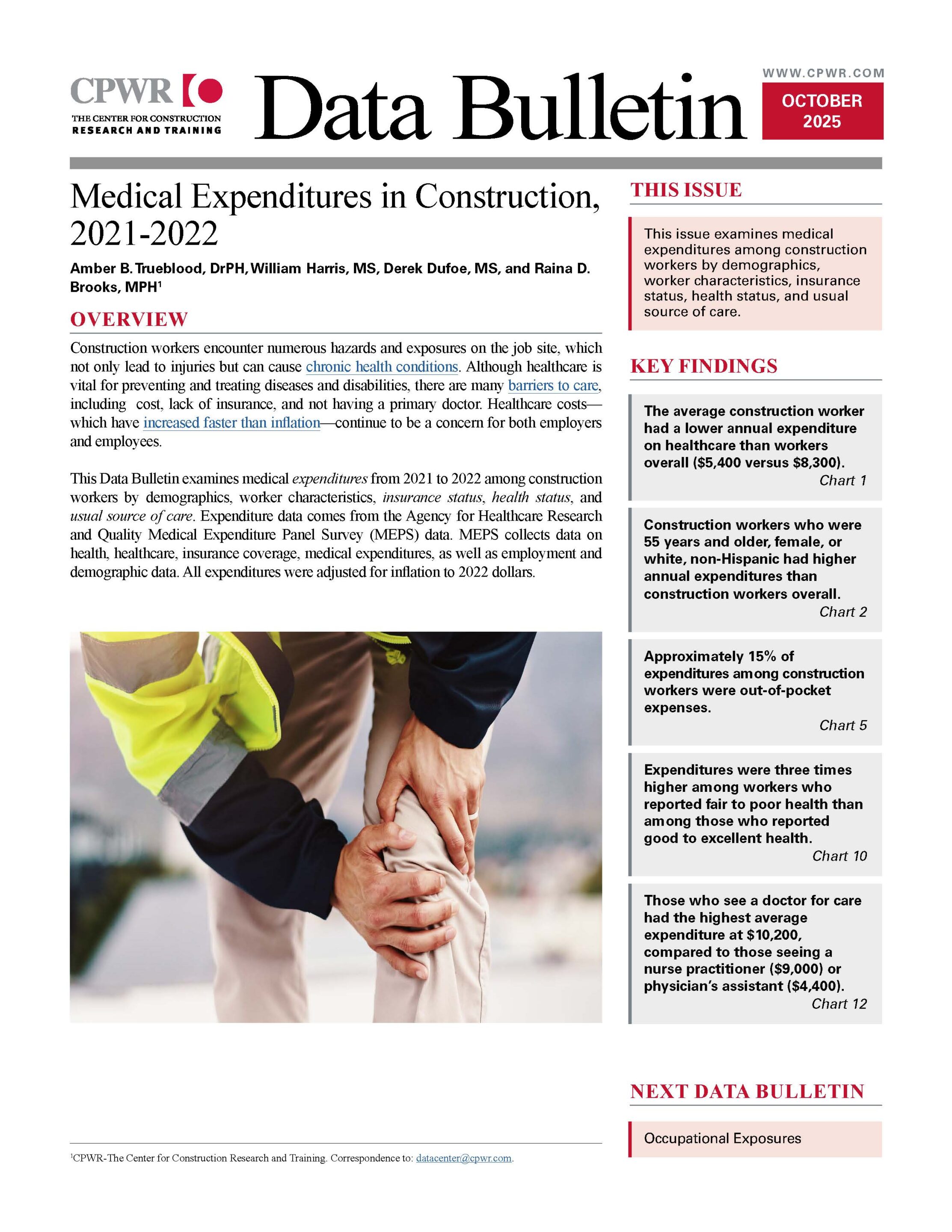
This Data Bulletin examines medical expenditures from 2021 to 2022 among construction workers by demographics, worker characteristics, insurance status, health status, and usual source of care.
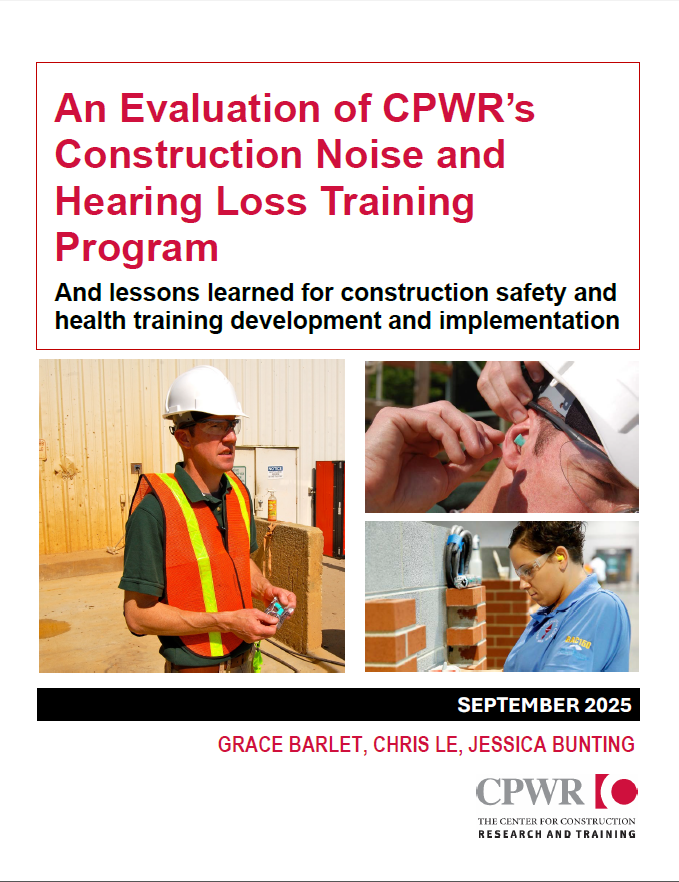
This study evaluated the usability and effectiveness of CPWR’s Construction Noise and Hearing Loss Prevention Training Program, originally developed in 2018. Over 90% of trainers and trainees rated the program good or excellent.

This interactive dashboard highlights foreign-born worker trends.
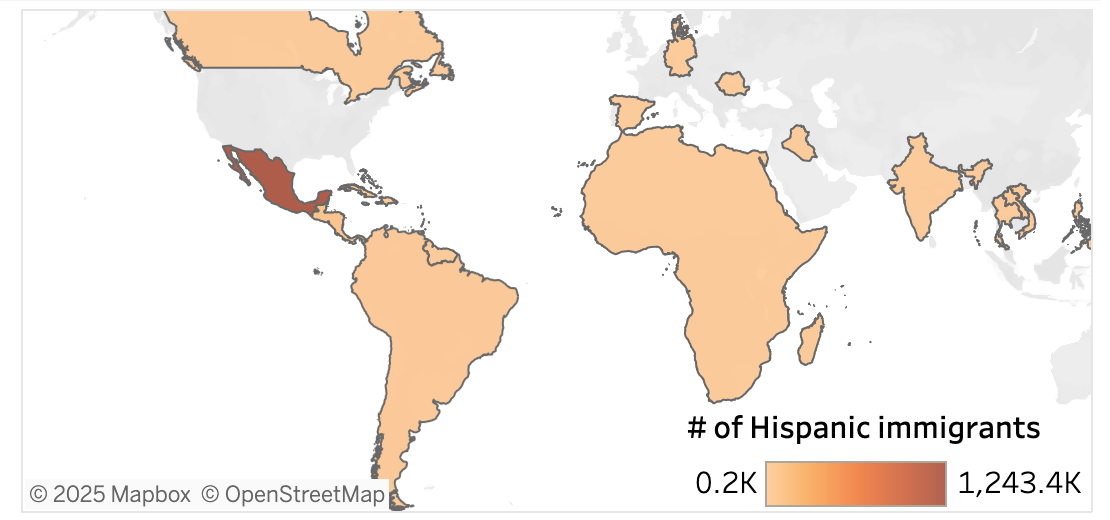
This interactive dashboard presents trends foreign-born Hispanic workers.